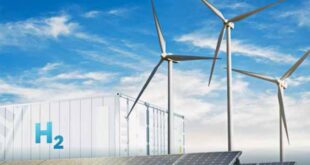The price of carbon dioxide on the European Union’s emissions trading markets, ETS, has taken a bad tumble. On the face of it, this is good news—it means industries covered by the scheme are emitting less. But in this case, fewer emissions mean less money for the transition.
Earlier this year, the price per carbon permit on the ETS dropped to the lowest in over two years, at 55 euro, equal to some $58. The drop came as a surprise to ETS architects and supporters in Brussels, who had plans for much higher emission prices with a view to filling up the funds meant to pay for the transition away from emitting sources of energy.
Reuters reported this week that the continued decline in carbon prices on the ETS has, since the start of this year, erased over 4 billion euro, or $4.36 billion, from that market. This means there is over 4 billion euro capture, and other transition tech. The kicker? There was no other way this could have played out.
When the ETS was being devised, its purpose must have seemed simple enough. Power-generating companies produced emissions of carbon dioxide during the course of their normal operations. Because that carbon dioxide was selected as enemy number-one of modern Europe, they were obliged to pay for their emissions by buying so-called carbon permits at market prices. Market prices meant demand and supply would determine how much emitters pay to continue emitting.
This idea would, on the one hand, secure money for advancing the transition away from carbon dioxide-emitting sources of energy such as coal and gas and towards presumably non-emitting sources such as wind and solar. On the other hand, by making it expensive to emit, the mechanism would also stimulate emitting businesses to invest in alternatives that reduce their emissions. And this is exactly what happened.
Solar and wind installations in Europe have been on a tear, at least they were until last year. As a result, the EU is sourcing a record amount of its electricity from these two. But this means that coal and gas generators are producing less electricity—and fewer emissions. And this, in turn, means they need fewer emission permits, which, in its own turn, means less money available to go into the transition funds. Demand and supply at their finest—only no one in Brussels seems to have thought about it.
This is quite surprising given the simplicity of the idea and, more than that, this idea’s essentially paradoxical nature. The people who devised the ETS believed it would stimulate more wind and solar—which it did—while also encouraging emitters to keep emitting, so the EU could pay for even more wind and solar. And they made that assumption based on the notion that the supply of carbon permits would be gradually squeezed, pushing prices higher.
Another thing that the authors of the ETS believed was that the carbon market would reduce emissions—and it did. Last year, emissions covered by the ETS fell by a substantial 15.5%, which was a record. This was a result of the growing share of wind and solar electricity, which also hit a record and, it bears repeating, led to lower output from gas and coal generators. The fact that carbon permit prices also fell was in no way a coincidence, yet it seems no one thought about it at the time, and now many are concerned about the falling prices. Not only that, but it seems that no lessons have been learned.
The EU’s climate commissioner, Wopke Hoekstra, recently said that he would aim for a 90% reduction in emissions across the bloc by 2040. London Stock Exchange Group researchers calculated that this would mean ETS prices would soar to 400 euro per ton by that year, according to a Euractiv report from October last year. But would they really? Judging by what happened last year, the answer is “Hardly.”
Theoretically, limiting supply for a necessary product or service while essentially mandating demand should have done the trick. But what the mandate-issuers appear to have forgotten is that they can’t really force generators to keep operating on a business-as-usual basis when this business-as-usual costs ever more to keep going. So, they are curbing output because it’s increasingly harder to compete with heavily subsidized wind and solar. And because they are curbing output, they are emitting less and need fewer carbon permits.
Now, the EU is planning to expand the ETS to other industries as well, including transport. The hope is that this would bring in more money for the transition. What it would likely achieve as a side effect would be a repeat of what happened with power generators: higher costs would kill demand, ultimately failing at achieving one of the two primary purposes the EU had assigned them. But the extension would probably succeed at achieving the second primary purpose: demand destruction would definitely lead to lower emissions.

 Iran Energy News Oil, Gas, Petrochemical and Energy Field Specialized Channel
Iran Energy News Oil, Gas, Petrochemical and Energy Field Specialized Channel



